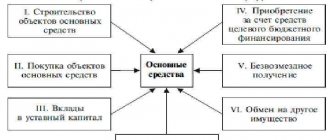Content:
1. Bankruptcy auctions: concept and features 2. Basic conditions for participation in bankruptcy auctions 2.1 Submitting an application 2.2 Setting the price of the object 3. Stages of bankruptcy auctions 3.1 Primary auctions 3.2 Repeated auctions 3.3 Public auctions 4. Types of property put up for bankruptcy auctions 5. Platforms for bankruptcy auctions 6. Main stages of participation in public electronic auctions Stage 1. Registration and receipt of an electronic signature Stage 2. Registration on the electronic trading platform Stage 3. Selection of lots Stage 4. Setting up the software Stage 5. Preparing an application for participation in electronic auction for bankruptcy and transfer of the deposit Stage 6. Submitting an application for participation Stage 7. Participation in the electronic auction Stage 8. Completion of the electronic auction and summing up Stage 9. Full settlement with the seller. Entry into property rights
Basic Concepts
Terms used by the law:
- A debtor is a person or organization that is in arrears on various payments.
- A creditor is an organization to which the debtor has obligations. The creditor may be the state.
- Bankruptcy is a decision made by a court that a debtor cannot pay a debt.
- Property - any items owned by the bankrupt. The list of items to be sold does not include personal belongings, office supplies, employee uniforms, sole housing, and necessary household appliances.
- An enterprise is a single complex through which a citizen carries out his activities.
- Bidding is the process of selling property.
- A bankruptcy trustee is a person who is authorized to conduct tenders, invite appraisers, and coordinate the actions of all participants in bankruptcy.
- A public offering is a method of selling property that was not sold at auction.
An organization, an individual entrepreneur or an individual who is not engaged in business can become bankrupt. An organization most often acts as a creditor. Bankruptcy always has a negative impact on the credit history of an individual or the head of an organization.
Important! The bankruptcy trustee's remuneration depends on the amount of money he receives for the debtor's property. The debtor cannot bypass this rule and sell his property on his own.
The bankruptcy trustee also chooses the methods of selling the debtor's property.
Bankruptcy auctions: concept and features
There are situations when the debtor (whether a legal entity or an individual) does not have the financial ability to repay the loan or close the issue of other financial obligations (tax payments, loans, etc.). Then the bankruptcy procedure comes to the “help”, which is described in detail in this article.
The debtor's described property is put up for auction to cover financial obligations to creditors. This is called bankruptcy bidding , when the bankrupt’s property is sold through auctions.
Bankruptcy proceedings (also called bankruptcy auctions) are the last stage of the bankruptcy procedure for an individual or legal entity.
The assessment of the property and its further sale is carried out by an arbitration manager, who is appointed by the court. His responsibilities include the full organization of auctions and selection of property for sale.
The Federal Law “On Insolvency (Bankruptcy)” very clearly states that the bidding procedure must be carried out electronically on electronic trading platforms. Auction participants can be both individuals and legal entities.
There is a “belief” that bankruptcy trustees often buy out lots themselves at competitive prices and then resell them. But I can assure you with certainty that this is not so. The bankruptcy procedure itself, and then the bidding process, is absolutely transparent. Its progress can be tracked at any stage, so if you suspect something, you can safely file a complaint with the appropriate authorities. If, as a result of its consideration, facts of fraudulent actions are revealed, the bankruptcy trustee and all persons involved in this matter will face not only administrative, but also criminal liability.
Until 2015, only the property of legal entities could be sold at bankruptcy auctions, but after the Federal Law “On Bankruptcy of Individuals” came into force, it became possible to sell their property as well. This law fully regulates the tendering procedure.
The list of property at auctions for bankruptcy of individuals may include vehicles, land, plots, dachas, residential and non-residential premises, large household appliances, etc.
The sale of the debtor's property at auction makes it possible to partially, and sometimes completely, settle obligations to the creditor.
We discussed the topic of bankruptcy of individuals and legal entities in great detail in previous articles.
There are 2 schemes for selling bankrupt property:
- Bidding (open auctions) . Anyone can take part in them. However, there are cases when participation may be limited due to the fact that the property cannot be in free circulation. This could be jewelry or weapons.
- Competitions. Property that has the status of cultural or historical value, monuments of cultural heritage, etc. During the competition, increased security measures must be applied, but the organizers are also obliged to provide free access to potential buyers to the product.
If the auction is won by the participant who offered the highest price, then in the competition, in accordance with clause 4 of Article 447 of the Civil Code of the Russian Federation, the winner will be the participant who agrees to fulfill all the conditions presented in the sale and purchase agreement and other documents regulating holding a competition.
Pitfalls and scams
In addition to the obvious advantages of purchasing property at auction, the happy owner of the assets of a bankrupt bankrupt may also encounter some difficulties:
- no matter how carefully the preliminary check of the property put up for auction is carried out, there is a possibility that there are some hidden legal nuances, encumbrances that become clear only after the property finds a new owner;
- You need to understand that most of the property put up for bankruptcy auctions is far from new, used, and may require repairs. Accordingly, its quality is not always comparable even with the price offered at auction.
The ins and outs of trainings on participation in tenders.
Around the sphere where material assets worth multimillion-dollar sums are circulated, including bankruptcy auctions, there is always a category of persons illegally trying to enrich themselves at the expense of all participants in such events.
One of the common types of fraud, well camouflaged as completely legal activities, is the holding of all kinds of seminars and trainings. What could be the catch here?
Often such seminars are held not with the goal of providing some relevant information, but simply to take money. Moreover, they charge for information that would not be difficult to find on your own on websites dedicated to the topic of bankruptcy auctions.
But this is the most, so to speak, harmless way of fraud:
- Fraudsters use seminars to “tie” students to a specific trading platform, i.e. train to work only on a specific ETP. This allows you to then have a stable stream of commission income from clients.
- At such seminars, on the contrary, they may provide deliberately distorted, false information so that none of the students of such courses can fully participate in the auction. Clients “trained” in this way, making mistakes invisible to them, may not register and not gain access to trading. As a result, the circle of participants is narrowed to the required level. This is beneficial for those who have the goal of carrying out some kind of corrupt transaction through an auction, so that as few independent participants as possible know about this transaction.
Basic conditions for participation in bankruptcy auctions
In order to take part in bankruptcy auctions, you must fulfill several mandatory conditions.
2.1 Submitting an application
Naturally, the first condition is to submit an application to participate in the auction. The application must be completed on a standard form in two copies.
After the application is completed, a deposit agreement is concluded between the participant and the organizer of the bankruptcy auction, which regulates the amount that must be transferred by the participant to the bank account of the auction organizer. The deposit is a guarantee that after winning the bidder will buy the lot.
After transferring funds, the participant must submit the original payment order with a note from the bank confirming the transfer. The payment order must be submitted no later than the last day for accepting documents.
2.2 Setting the price of an object
The initial price of the bankruptcy auction object is set either by a special committee or a meeting of creditors in accordance with the exchange price of assets. The procedure for setting a price is such that, first of all, a report is prepared to evaluate the object of the bankruptcy auction. Such an assessment is carried out either by the arbitration manager or by a trustee appointed by him. The initial price must not be lower than the market average. The price is usually set in the last hour of the business day preceding the trading day.
Thus, according to Article 94 of the bankruptcy law, the minimum value of the property is assigned by the debtor’s arbitration manager. The final cost is determined based on the results of the auction.
How to apply for participation in the auction?
There is no application form established at the legislative level. The application form is free, but the application must be prepared in Russian. According to paragraph 11 of Article 110 of the Bankruptcy Law, the following information must be included in the bid application:
- for a company – name, legal form, location, postal address;
- for citizens – full name, passport details, address of residence;
- telephone number and email address;
- information about whether or not the company or person who submitted the application has an interest in relation to the bankrupt, his creditors, the manager and the nature of such interest;
- price proposal – can be specified if there is a closed auction (your proposal will be kept secret until the start of the auction).
But many sites have a standard application form. It is advisable when participating in bidding on a particular trading platform to adhere to the application form that is defined there. For example, on the website of the Russian Auction House there is the following template:
Note! A deposit is required before submitting your application. Its amount and details for transfer must be reflected in the tender card that you have chosen. By law, the amount of the deposit cannot be more than 20% of the value of the property.
All details on filling out and submitting an application are contained in the regulations of the trading platform. Usually these are multi-page documents - about a hundred pages, but we still recommend that you familiarize yourself with the regulations of your ETP in detail, since the slightest deviation from the rules specified in it can lead to rejection of the application.
Here you can read the manual for bidders of the Russian Auction House - https://sales.lot-online.ru/e-auction/media/manual_user.pdf.
And here are the regulations for bidders on Sberbank-AST - https://www.sberbank-ast.ru/Docs/Reglament44FZ_2018.pdf.
Note! The auction organizer must provide a period for sending applications of at least 25 working days from the date when information about the sale of property was posted.
After submitting an application, the auction organizer must register it in the application log (serial number, date and exact time of application submission) and send the applicant confirmation of registration on the same day to the email address specified by the applicant.
Stages of bankruptcy bidding
The bankruptcy bidding procedure has strict regulations, and therefore it has 3 stages: primary, repeated and public. Let's take a closer look at each.
3.1 Primary trading
Primary bidding is the initial stage of the procedure. Participants can place bids, increasing the price of the lot, only by the increment size determined by the terms of the auction. The next step can be taken only half an hour after the system accepts the previous one.
3.2 Re-bidding
If for some reason the primary auction is declared invalid, a repeat auction is scheduled. The cost of the lot in this case will be 10% lower than the original one.
3.3 Public bidding
If the first two stages of bankruptcy bidding are declared invalid, a public auction is scheduled. The main feature of public auctions is that the price of a lot is reduced at certain intervals. At public auctions you can purchase a lot at a discount from the initial price to 99%. It is important to have time to conclude a deal before your competitors.
We will talk about what can be purchased at bankruptcy auctions in the next paragraph of the article.
Stages of conducting an auction
When bidding for bankruptcy of individuals, experts distinguish 3 stages. Let's look at them in more detail:
- Stage I. It is called primary trading. It is the initial stage. During this period, participants have the right to place bids in order to increase the value of the object of sale. The size of the step to increase the value of the lot is determined in advance by the trading conditions. Each subsequent step is taken by the system half an hour after the previous one.
- Stage II. This period is called re-trading. They are carried out when the auction is declared invalid for specific reasons. When selling again, the price of the lot is set 10% lower than the previous one.
- Stage III. When the first and second auctions are declared invalid, public auctions are scheduled. The main difference of the procedure is a significant reduction in the price of auction items, which occurs after specific periods of time, agreed upon in advance.
Types of property put up for bankruptcy auction
The list of property put up for bankruptcy auction is huge. Let's take a closer look at the most popular objects that are put up for auction:
- securities of legal entities or individuals;
- factories;
- the organizations themselves (firms, enterprises, including manufacturing factories, etc.);
- special equipment;
- transport;
- Appliances;
- trademarks and rights of claim;
- real estate (commercial, residential, industrial, buildings, structures, land, including agricultural land, etc.);
- money;
- production equipment.
Due to the fact that there are few people in our country who have information that it is possible to participate in bankruptcy auctions, you have every chance of conducting an effective transaction.
In some trades, there is a minimum number of participants, and, therefore, it is possible to buy an asset at a minimum price.
What is more profitable to buy?
When auctions are held for bankruptcy of individuals, not everyone takes part in the sale. The question arises, why don’t people use such an accessible opportunity to make money as the sale of the property of a bankrupt individual? There appear to be two reasons.
Let's start with the first one
. When auctions for bankruptcy of individuals are conducted, you need to be extremely careful. To do everything right, you quickly need to take into account dozens of nuances. Even a minor mistake in the application for participation in the sale may be the reason that you do not get the desired asset.
An error in the evaluation of a lot is considered even more serious. It threatens that you will not be able to sell the asset even at cost. Instead of the desired profit, the participant receives stress and losses. Therefore, to properly participate in bidding, you must undergo special training.
The second reason
— the complexity of the transaction when selling an auction lot. To make a profit, you need to choose the right asset, conduct an investment assessment, conduct trades, and win them. And only after all of the above actions can a sale participant successfully sell the purchased item and make a profit from it.
A professional auctioneer must constantly work for all kinds of specialists. He needs to be an appraiser, auditor, accountant, lawyer, seller, etc. Only in this way will he be able to carry out a transaction to his benefit.
You can buy real estate, machinery, and equipment at auctions. In addition, purchases of receivables have become popular. For example, for 1-2 thousand rubles. You can purchase a “receivable” with a debt of 100 thousand.
When deciding to buy real estate, you should consider some nuances:
- Purpose of purchase. It is advisable to buy an object that is useful for personal purposes.
- Purchase price. It is undesirable to give away all available funds for the purpose of profit. Things don't always go according to plan. The risk may not be worth it.
- Property location. Experts recommend purchasing lots located in your region. This will help avoid losses.
Bankruptcy trading platforms
There are a very large number of platforms for holding auctions, including those that successfully sell the property of bankrupt people, but we can highlight the 5 most popular ones.
1 Platform - Unified Federal Register of Bankruptcy Information (bankrot.fedresurs.ru)
It is on this site that complete information about ongoing auctions is collected, and this information is also posted in advance. Studying the presented register of objects will allow the participant to more fully evaluate the auction and prepare for it as thoroughly as possible.
2 Site - Sberbank AST (sberbank-ast.ru)
This site is one of the most convenient and has an intuitive interface. It displays the property of companies that have taken out a loan and cannot repay it. The disadvantage of this resource is that it contains a small number of auctions.
3 Site - Fabrikant.ru (fabrikant.ru)
The most extensive site with a large number of exhibited lots.
4 Site - Implementation Center (bankrupt.centerr.ru)
This site displays the property of organizations that are legally declared bankrupt.
5 Platform – Universal ETP “Electro torgi” (electro-torgi.ru)
The “youngest” site that is actively developing. It has a clear and user-friendly interface, and lots are updated frequently.
There are a huge number of sites on the Internet where you can find the desired auction items.
Auction sites are divided into 3 types:
- Trading platforms - direct organization and conduct of online auctions;
- Official portals - the most complete data on trading, published in accordance with Russian legislation. The most striking examples of such sites are Fedresurs and the Saturday edition of the Kommersant newspaper.
- Aggregators of bankruptcy auctions - such portals accumulate all information about upcoming auctions from the Internet and host them.
Of course, before you take and participate in the auction, you need to seriously prepare and decide on the site. We will talk about the main stages of participation in the next paragraph of the article.
How to find the auctions you are interested in during bankruptcy?
State register of trading in case of bankruptcy of companies - Unified Federal Register of Bankruptcy Information (https://bankrot.fedresurs.ru/TradeList.aspx).
Using the search form, you can find information about auctions for a specific organization that is going bankrupt, or select the property you are interested in, you can also select auctions in your region.
For example, we are interested in bidding for the sale of a completed building in St. Petersburg. Select the region, make a mark in the Property Classification section and select the desired date. Here is a list of auctions being held in St. Petersburg according to the criteria we have chosen.
We begin to study the proposed tenders - to do this, you need to click on the content in the “Type of tenders” cell.
Then a window will open in front of us, where there will be detailed information on:
- property that is being sold at auction;
- starting price;
- auction step;
- the size of the deposit;
- details for payment and deadlines for payment of the deposit;
- trading platform where trading is held.
Look at the Announcement of the auction, it contains detailed information about the auction for this lot and attached forms of contracts - purchase and sale and deposit.
You can also read the sales message - click on the “Messages” tab and open “Sale message”.
To directly participate in the auction, you will need to go to the trading platform website (to do this, just click on the “Platform” tab and follow the link to the site).
In our example, the trading platform is the Russian Auction House (https://lot-online.ru/home/index.html). We find the auctions we are interested in already on this website (https://bankruptcy.lot-online.ru/e-auction/auctionLotProperty.xhtml?parm=organizerUnid%3D1%3BlotUnid%3D960000161336%3Bmode%3Djust) and get acquainted with all the conditions for participation in the auctions and necessary documents.
Pay attention to the clauses about the deposit - what details and in what time frame it must be transferred, as well as information about the procedure for familiarizing yourself with the property. Before participating in the auction, we recommend that you personally inspect the property, so that later it does not turn out that you have purchased a “pig in a poke.” According to the bankruptcy law, the auction organizer is obliged to provide an opportunity to familiarize himself with the property, as well as with documents related to this property. The form of such familiarization may include direct visual inspection, photographing property and copying documents (clause 8 of Article 110).
Main stages of participation in public electronic trading
At its core, the procedure for taking part in bankruptcy auctions is simple; it is important to comply with the law and go through all the stages. Below I propose to consider all stages of participation in the auction.
Stage 1. Registration and receipt of an electronic signature
An electronic signature is a specialized set of characters that identifies a signer located on a device similar to an external storage device (flash card).
Thanks to this device, you can conduct electronic document management without using paper media. Detailed information about why an electronic signature is needed, how to obtain it and what types of electronic signatures there are are written in this article.
The main functions of an electronic signature are the protection of documents from forgery, proof of copyright in a particular document, transfer of files via encrypted channels, the ability to submit price proposals when participating in trades and tenders, as well as the signing of contracts and other acts based on the results of trades and auctions.
An electronic signature can only provide access to a certain list of sites, so before ordering it, make sure that the functions and range of services are available.
Stage 2. Registration on the electronic trading platform
In order to register on the electronic trading platform, you will definitely need an electronic signature, as well as uploading a certain list of documents in scanned form.
As a rule, for individuals this is a passport (page spread with a photo and registration), for legal entities and individual entrepreneurs - constituent documents.
Be sure to read the list of required documents in order to have time to prepare them. Site accreditation may take three to five business days. It is not necessary to be accredited at all sites. It is enough to register only at the one where the auction for the selected lot will take place.
Stage 3. Selection of lots
We have already talked above about where to look for bankruptcy auction items. First of all, I advise you to consider offers in your region.
After you decide on the object of purchase, carefully study all the documentation on it (documents on valuation, ownership, etc.) so that in the future no unforeseen situations arise with the original owner of the property.
If you are planning to purchase a car or real estate, you have the right to inspect the property in advance. The auction organizer's card always contains contact information where you can contact and arrange a meeting. We advise you to take an experienced appraiser with you so that the value of the lot does not turn out to be too high. Of course, this only applies to tangible assets (equipment, transport, real estate, and so on).
If you are planning to purchase securities or a company, I advise you to seek advice from experienced economists and lawyers, so that, again, you do not purchase assets at an inflated price.
Thus, a preliminary analysis of the lot will help you adequately assess the feasibility of participating in the auction.
Stage 4. Software setup
To take part in the auction, you need to correctly configure all the necessary programs. To work on an electronic platform, in most cases, the Internet explorer browser is used, and to use an electronic signature, you may need a specialized program “CryptoPro”.
At the moment when you issue an electronic signature, I advise you to consult with the company’s specialists about what computer settings you may need. You can also resort to the services of system administrators.
Stage 5. Preparation of an application for participation in electronic bankruptcy auctions and transfer of the deposit
So, the object of purchase has been selected, the computer is configured, it’s time to register an application for participation. It is important to carry out this procedure in advance so that there is an opportunity (in case of missing documents or errors in registration) to correct everything. This caution is very important for those who are taking part for the first time and have no experience in participating in this type of auction.
A situation may arise that requires the involvement of a third-party specialist, so (I will not tire of repeating) take care of everything in advance, at least 3-4 days before the start of the auction.
At the time of completing the application, you will need to attach a payment order confirming the payment of the deposit amount.
Attention! Without a deposit, participation in the auction is IMPOSSIBLE! The amount of the deposit is determined and indicated in the documentation for the auction and will be approximately 5% of the cost of the object.
Details for transferring funds will also be indicated in the documentation. It is very important to check with the organizers whether it is possible to use the online fund transfer service, since there are often situations where the auction regulates the attachment of a payment order with a bank mark and an electronic receipt may not be suitable.
Another important point is the bank’s commission for transferring funds. Check with your bank about the amount of the transfer fee.
If you lose the auction, the deposit will be returned to you within the time specified in the bidding documents. As a rule, this period can be 30 calendar days.
Stage 6. Submitting an application for participation
For each bankruptcy auction, the application submission time is determined separately. In some auctions, the winner is the one who first submitted an application; in others, it is important to submit an application before a certain point. To get started, attach all the necessary documents, then sign and send them using an electronic signature.
Stage 7. Participation in the electronic auction
There can be a lot of features of participation in an electronic auction, and there are several types of this procedure.
In a closed auction, all submitted bids are opened at a set time, and the winner is the one who offered the best price.
An open auction is a bidding similar to a physical auction, only everything takes place on an electronic platform in your personal account. The organizers set a certain increment of the amount and the period of time during which this step can be taken. Auction participants only see the bidder's number and the amount he bid.
Thus, in an open auction, the winner is the one who submitted the last offer before the end of the auction.
Open bidding is considered the most open and transparent.
Stage 8. Completion of the electronic auction and summing up the results
Upon completion of the bankruptcy auction, within half an hour, the organizers create a protocol that describes the full procedure for completing it, and then within three working days the final protocol is published, where the winner is announced.
For those participants who did not win the auction, it ends quite simply - you need to wait for the deposit to be returned and that’s it. If a refund has not occurred within several days, you should contact the organizers for clarification.
With the winner, everything is much more complicated. After the official publication of the final protocol, a purchase and sale agreement is concluded. The form of this agreement is sent through the electronic trading platform. The winner fills it out, signs it electronically and returns it back to the organizer through his personal account, and then in physical form on paper via mail.
If the winner for any reason refuses the deal, the deposit will not be returned to him.
Stage 9. Full payment with the seller. Entry into property rights
After all formal stages are completed, contracts are signed, the winner sends the remaining payment for the object. It is important to carefully enter the details, as they may differ from those to which the deposit was transferred.
When all conditions are met, the auction winner becomes the full owner of the object and can begin preparing documents confirming ownership.
Thus, if all conditions and stages of bankruptcy bidding are met, no serious problems should arise. In any case, you can always contact the electronic trading platform support service or lawyers for help.
And at the end of the article, I suggest you watch a short video that describes a step-by-step algorithm for preparing for participation in bankruptcy auctions: This concludes my article about bankruptcy auctions. If you still have questions, ask them below in the comments to this article.
PS: Please rate and like, and share this article with your friends and colleagues on social networks.
Where to find information about upcoming auctions and bankruptcy auctions
Expert opinion
Vladimir Silchenko
Private investor, stock market expert and author of the Capitalist blog
Ask a Question
Auctions and trades for the sale of property of bankrupt legal entities and individuals are classified as public and open. Information about the time of auctions, what can be purchased at them, what property is contained in special state (official) media.
Numerous Internet resources that are in one way or another related to arbitration proceedings and government auctions can provide assistance in finding such information.
Below I will provide official and commercial sources of information about trading, including about the bankruptcy trading platforms themselves.
Official sources
Among the official sources of information about all tenders and bankruptcy procedures, I would primarily include:
- www.zakupki.gov.ru /. This is a public government portal about all auctions, trades and tenders.
- Unified Federal Bankruptcy Register (EFIR) https://www.fedresurs.ru, the current operator of the EFIR is Interfax CJSC. Messages reflecting the progress of bankruptcy procedures (notices of judicial acts, announcements of tenders, tender results, meetings of creditors, other messages), various registers and a list of bankruptcy trading platforms must be posted on this website.
Figure 7. Unified Federal Register of Bankruptcy.
- FSSP - Federal Bailiff Service.
- Portal "Government Services".
- Property auctions ETP MICEX Government procurement (etp-torgi.ru).
Also among the media that publish information about bankruptcies, including where you can buy bankrupt property at auction, are Rossiyskaya Gazeta and the weekly Kommersant.
TOP 5 electronic trading platforms
The top rating of ETPs where sales of bankrupt property are held, according to RIA Expert for 2021, includes the following auction trading platforms:
- Sberbank-AST. Sale of bankrupt property (www.sberbankast.ru/Bankruptcy). This is the most active and in-demand bankruptcy broker, having its own trading platforms and branches in all regions of the country.
- EETP property auctions (sale.roseltorg.ru).
- Bidding for privatization, sale and rental of property, bankruptcy - RT trading platform or RTS-Tender (i.rts-tender.ru).
- Property auctions ETP MICEX Government procurement (etp-torgi.ru).
- Sale of property and bankruptcy trading platform ZakazRF (sale.zakazrf.ru).
- Russian auction house https://auction-house.ru.
Figure 8. ETP “Order of the Russian Federation”.
Rating of the best lot search services
Figure 9. The best bankruptcy trading platforms in Russia.
Where can I purchase lots from the public?
If such auctions are constantly organized, then where can you view the lots and submit applications? Everything is quite simple. It was already mentioned above that trading in a public offering is conducted in electronic format.
There are special resources that collect announcements of such auctions from all over the country. Such sites are called aggregators. On them, the user can easily, using a convenient filtering system, find a lot that he likes.
In addition, you can always find offers on the websites of trading platforms where bankruptcy proceedings are organized. For example, Sberbank-AST, Fabrikant, Lot-Online.
In addition, according to the law, all information about auctions is published on Fedresurs and in the Saturday edition of the Kommersant newspaper.
This is the basic basic information about what a public offering is. As for the intricacies of trading, they need to be studied in practice. You need to understand that experience comes with the number of transactions, so if you want to find a good offer and buy real estate at a good price, then start by choosing an aggregator and analyzing the market.
A little fundamental
Since there is no particular need to repeat and remind that the bankruptcy procedure, which predetermines the sale of all designated property, takes place on the basis of Federation Law No. 127-FZ, we can immediately move on to the main part of today’s topic - organizing and conducting bankruptcy auctions, who, where and how they are coordinated. The legislative basis for bankruptcy trading is:
- Article 110, Article 138, and Art. 139 of Law No. 127-FZ,
- as well as MEDT order-495 with the latest editorial amendments dated July 13, 2015.
Who controls the process and what their authority covers
All property of the bankrupt is sold through open or closed auctions on electronic trading platforms. The organizers of this process can be either third-party organizations or the arbitration manager himself. The powers of the auction organizer include:
- Mandatory placement of information that bankruptcy auctions will be held in:
- newspaper "Kommersant"
- in a printed publication at the location of the debtor,
- on the Unified Federal Register of Bankruptcy Information,
- on the electronic platform selected for the sale of property.
- The publication of the information message must be carried out no later than 25 (working!) days before the appointed date. At the same time, this time interval becomes the minimum period for submitting/accepting applications for participation. NOTE: How to submit an application for participation in the auction - read in part 2 of the article “Tendering in Bankruptcy”. It should indicate:
- The name of the applicant and its legal status, location (mailing address for legal entities),
Full name, passport details, registration (for individuals),
- Contact numbers and email addressees.
In addition, the application must indicate the presence or absence of any interest relating to the persons participating in the action (insolvency administrator, creditors, debtor, etc.).
- The content of the published message must include information:
- what type of auction is organized (open, closed), collateral property is sold, or an unencumbered bankruptcy estate;
what is the format of price proposals and their presentations;
- basic requirements for participants in a significant sale event if a closed auction is planned;
- requirements for competitive bidding, if a format for competitive sale of the debtor’s property has been announced;
- if closed auctions of property are scheduled, then the following must be indicated: the place, procedure, time and deadline for submitting current applications and price proposals for the price of the enterprise (that is, the time and start/end date for the submission of each of the received applications must be indicated). Then, when an open form of auction is assumed, the time frame for the end of submission of an application for the value of the enterprise put up for the lot does not need to be indicated;
- information on the registration and registration procedure for participation in the auction, including the entire list of documentation provided by the participants involved and the procedure for its execution;
- the amount of the required deposit, indicating the appropriate details and time frame for its payment;
- starting price of what is being sold;
- “Step” increase (size), if we are talking about open-type bidding for submitting price proposals;
- regulation of requirements for choosing a single favorite;
- hour, place, dated date of summing up;
- regulatory conditions for the timing and format of signing the purchase and sale agreement;
- account details with periods for making proper payments;
- complete information about the trading process coordinator.











